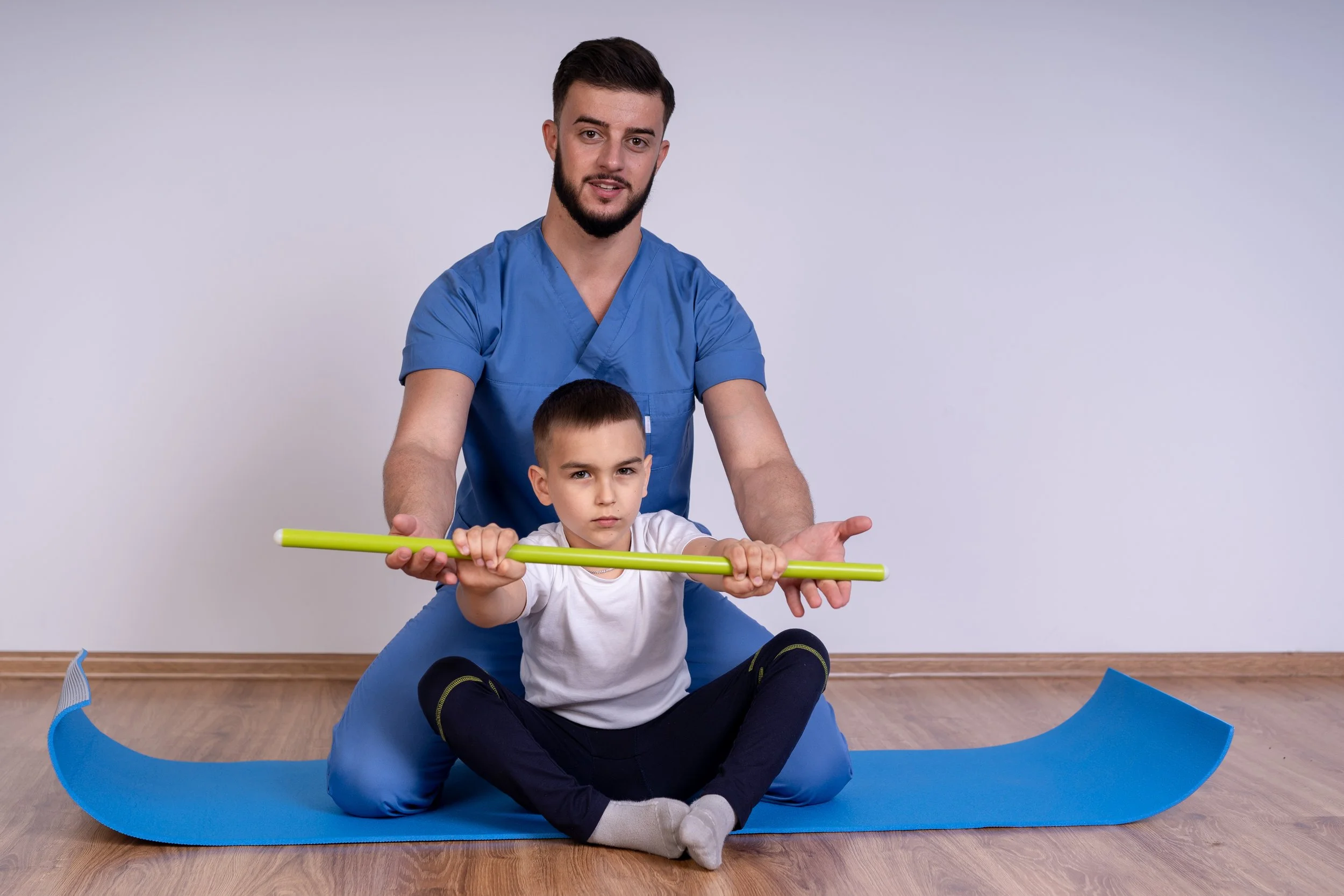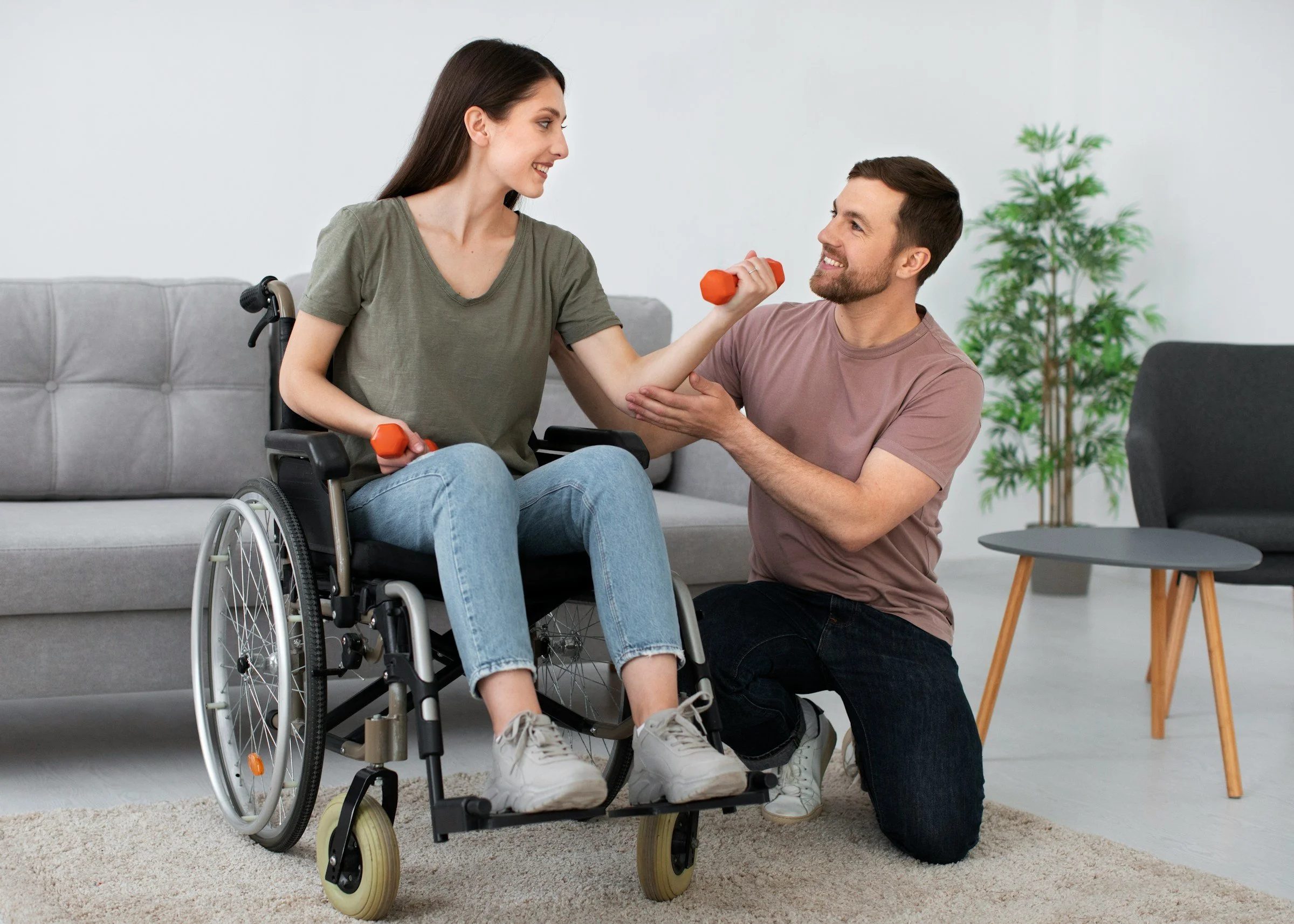Beyond The Brain: How ALS, MS, And Cerebral Palsy Affect The Entire Body
Neurological disorders like ALS, MS, and cerebral palsy affect more than just the brain. They impact the way people experience life. These conditions disrupt communication between the brain and muscles, often leading to weakness, stiffness, and loss of coordination. While they have many differences, one thing is often the same: the need for care that’s tailored to each person’s unique needs. A forward-thinking plan for movement makes all the difference.
What Is Amyotrophic Lateral Sclerosis (ALS)?
ALS, also known as Lou Gehrig’s disease, is a progressive neurodegenerative disorder that attacks motor neurons. These are the nerve cells that control your muscles. As these neurons die off, the brain is no longer able to communicate with the muscles, leading to twitching, numbness, and eventually paralysis.
This condition affects both the skeletal muscles we consciously move and the smooth muscles involved in involuntary actions. ALS typically begins with weakness in one area of the body, but spreads quickly, leading to difficulty with abilities we take for granted, such as speaking, swallowing, and even breathing.
Although most cases of ALS have no known cause, research has found that anywhere between 5 to 10% of cases are inherited. While treatments can help improve comfort, there is currently no cure, which is why ALS is known for its serious long-term impact on mobility.
What Is Multiple Sclerosis (MS)?
MS is a chronic disease that causes the body’s immune system to mistakenly attack the myelin. This is the protective coating around nerve fibers in the brain and spinal cord. Because of this breakdown in protection, nerve signals are slowed until the nerves themselves are damaged. It results in a range of unpredictable symptoms.
This disease is one that often comes in waves, with symptoms relapsing and then easing. Those might include tingling, vision problems, fatigue, weakness, or difficulty with coordination and balance. Some people with MS experience a more progressive decline.
While the cause of MS is unclear, research does point to a combination of genetic, environmental, and autoimmune factors. And although MS can be challenging, many people live for decades after diagnosis, especially when they receive early treatment and consistent care.
What Is Cerebral Palsy?
A neurological disorder that affects movement and muscle control, cerebral palsy is caused by brain damage during early development. This is often due to a lack of oxygen, premature birth, infections, or complications during delivery.
Symptoms can vary widely, but cerebral palsy isn’t known to worsen over time. Some people with cerebral palsy experience mild stiffness or trouble with coordination, while others face significant challenges with fine motor skills. It may also be accompanied by other conditions, such as epilepsy, vision or hearing loss, or cognitive impairment.
Early diagnosis and therapy can make a huge difference in terms of someone with cerebral palsy gaining their independence. Adaptive fitness, in particular, is a life-changing intervention because with the right support, many thrive with full, active lives.
How Do ALS, MS, And Cerebral Palsy Differ?
Causes
ALS: mostly unknown, but a fraction is genetic
MS: believed to be autoimmune, triggered by a mix of factors
Cerebral Palsy: caused by brain damage before, during, or shortly after birth
Progression
ALS: rapidly progressive
MS: may relapse or gradually worsen
Cerebral Palsy: non-progressive, though symptoms may shift
Age Of Onset
ALS: most common between ages 40 to 70
MS: most common between ages 20 to 50
Cerebral Palsy: signs appear in infancy or early childhood
Prognosis
ALS: limited life expectancy
MS: highly variable, though many manage symptoms long term
Cerebral Palsy: ranges from mild to severe, with many individuals leading independent lives
Gender Differences
ALS: slightly more common in men
MS: two to three times more common in women
Cerebral Palsy: no significant gender difference
How Are ALS, MS, And Cerebral Palsy Similar?
Similarities between these three neurological disorders include:
There is no definitive diagnostic test, so initial diagnosis is complex.
All impact motor function, which leads to difficulty with movement.
Day-to-day life is impacted, requiring therapy and ongoing care.
Beyond physical health, all can affect mental and emotional health.
Despite there being no cure, all three benefit from targeted rehabilitation.
The American Brain Foundation’s 2025 Cure One, Cure Many award focuses on the role neuroinflammation plays in brain disease. Their research is helping develop innovative approaches to improve the quality of life for those with neurological disorders.
Why Is Physical Activity Important For Those With MS And Cerebral Palsy?
Gone are the days when “take it easy” was the standard advice. People with MS and cerebral palsy benefit tremendously from regular, adaptive physical activity. Staying active helps them better manage stiffness, reduce pain, and avoid long-term health problems that come from things like heart disease, stroke, and osteoporosis. It also improves sleep, mood, and social connection.
Still, there are admittedly barriers, including a lack of inclusive spaces and higher energy cost of movement. But that doesn’t mean it’s impossible—it just means you need the right plan for your success. The key is to start where you are, not where others are.
Rather than going all out from the beginning, start your exercise journey slow and steady. Gradually increase the intensity of your movements in a way that is sustainable. That might look like alternating more vigorous activity with light activity, and especially focusing on movements that are important to you in your everyday routine. Plus, make it a point to build in rest so you don’t get fatigued from overexertion. Always listen to your body!
Unlock Your Potential With REIZ Adaptive Fitness
You don’t need to go it alone. We created REIZ Adaptive Fitness for the bodies that move differently. Through customized exercise plans, we guide you toward feeling stronger and enjoying your body exactly as it is. Whether you have MS, cerebral palsy, or another limitation, check out how we can help you gain confidence, improve mobility, and reach your goals.
REMEMBER: We are a fitness resource, not medical professionals. Before beginning a program with REIZ Adaptive Fitness, talk to your doctor and physical therapist.

